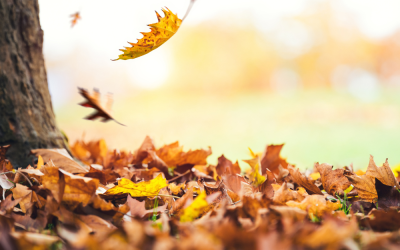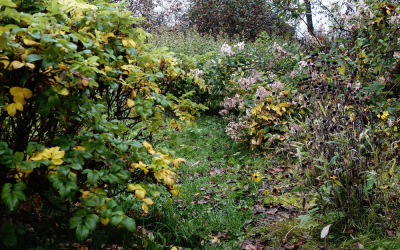Trees are the planet’s biggest plants and the longest-living species – but they’re so much more besides: they’re surprisingly clever (they can use chemicals to signal danger to surrounding trees), they beautify our spaces (increasing local pride and strengthening communities in the process), they boost wildlife as well as the economy (average house prices are 5-18% higher when near to mature trees) – and what’s more, being close to nature benefits health and wellbeing (hence the Japanese term for forest bathing, shinrin-yoku).
The following top four tips on how to keep your trees healthy might not involve actually hugging them (although various studies suggest doing so releases the feel-good hormone oxytocin) – there are a number of other, more practical ways you can care for your trees.
Early tree care
The first two seasons are critical for young trees. Keeping a 1-metre diameter around the sapling weed and grass free for the first 2-3 years minimises competition for moisture and nutrients, as well as offering pest prevention. Weeds can be suppressed using a 10cm-deep layer of mulch, straw bales or bark, or mulch mats which can be pegged into the ground. Young trees require watering, particularly in dry, hot conditions where they may require up to 5 watering cans a week depending on soil type. Ensure canes, guards and stakes are upright and firmly pushed into the ground to prevent wind damage and protect from any animals with a taste for young tree bark – and weed out any grass growing inside guards, replacing them if necessary. Also check for pests inside the guards regularly. At 3-10 years, guards can be removed as further use can stunt growth. Protecting your tree from herbicides and pesticides for use other than trees avoids the risk of chemical damage to growing tissue.
Tree Diseases
In addition to pests, your tree will likely be affected by a range of common diseases throughout its lifespan – but trees are generally quite hardy and can even survive frost damage. If in doubt, Woodland Trust have established Observatree, a tree health early warnign system to help spot and report outbreaks of pests and diseases in the interest of preventing their spread, so consider getting in touch for advice on this and further guidance on how to maintain trees.
Other Threats
Ensure those maintaining the space know where protected trees are to prevent damage to them. A Tree Preservation Order, or TPO is a written order from a local planning authority to protect specific trees or whole woodland areas from deliberate damage or destruction. Felling a tree affects wildlife and residents alike, and should only be considered as a slast resort. While trees may occasionally need to be felled for safety reasons – there are alternatives to managing “problem” trees – asking a quality-assured tree surgeon is the best course of action both in terms of preparation as well as in cases where the tree needs to be cut down. Remember that each felled tree was a home to wildlife, a landmark where it stood and a connection to the past – so if a felling must happen, compensate for it by planting three more.
Essential maintenance
Weeds can be killed using chemicals usuch as glyphosate. While this is one of the lesser toxic herbicides to use, there are a number of alternatives – such as manual weeding. While young trees may need additional moisture, well established trees don’t as much – unless conditions have been especially arid, in which case saturate the ground to ensure water gets deep into the soil. Avoid regular mowing as it increases grass – a key competitor for moisture. More intensive maintenance to encourage growth and keep the trees from overshadowing the ground beneath such as thinning, coppicing and pruning are best carried out by a licensed and trained tree surgeon.
As the famous Joyce Kilmer poem goes, “I think that I shall never see / A poem as lovely as a tree” – and whether you’re crunching through autumn leaves, lying under a canopy of green or seeing the first signs of warm weather in the blossom, it’s hard to feel indifferent about them. Even if you’re unlikely to hug a tree any time soon – show them that you care and help them flourish with these five tips – and the assistance of a qualified professional. A fully qualified, and trained tree surgeon Manchester based or beyond should also comply with health and safety regulations and be properly insured. Qualified consultants and tree surgeons can be found at the Arboricultural Association, who can also offer advice on longer term woodland maintenance.
In need of an experienced tree surgeon in Manchester? With over 30 years’ combined experience, Elm House Tree Services are qualified specialists who offer competitive prices combined with reliable, friendly customer support.



